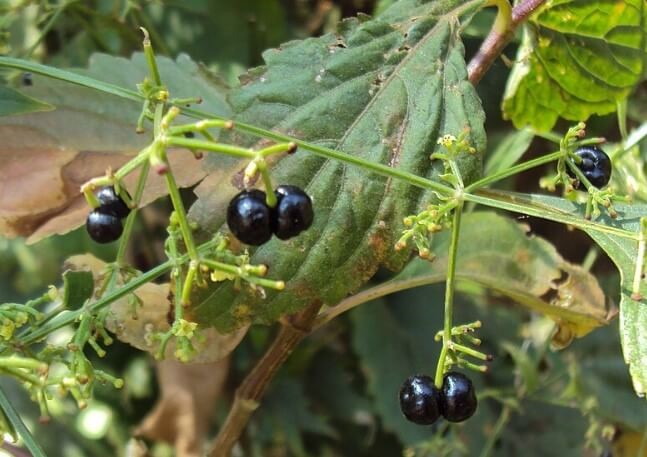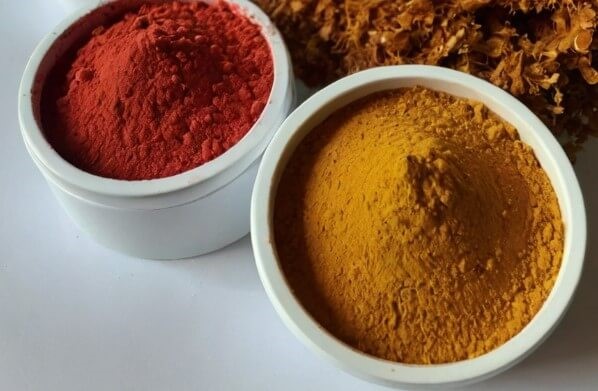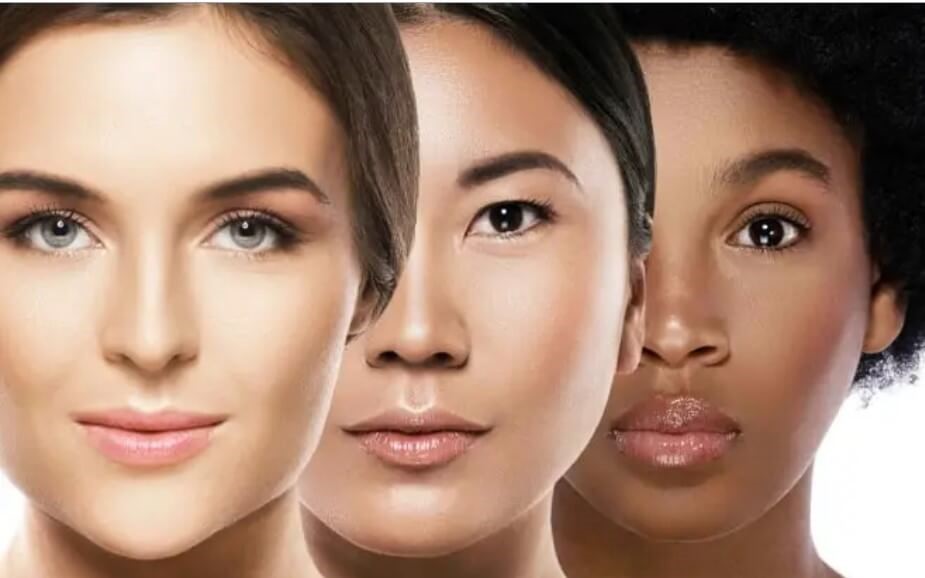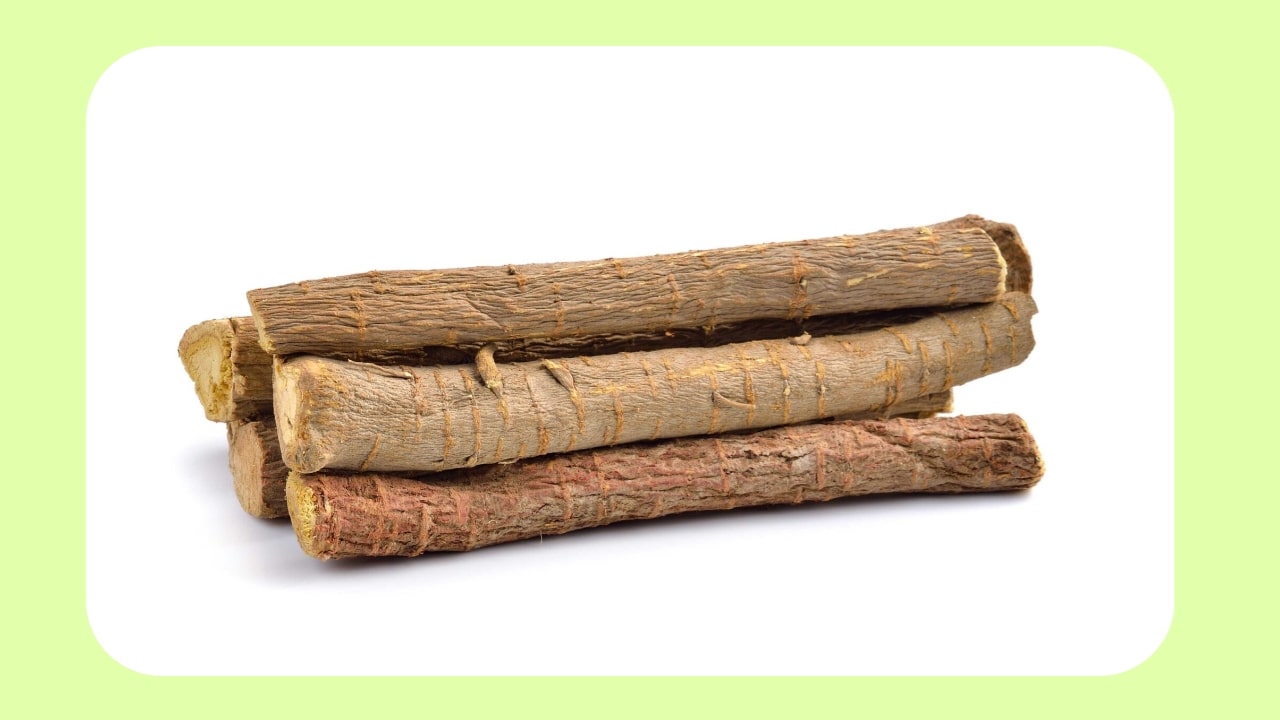The desire for a fair complexion is not a recent trend. The first recorded skin whitening practices date back to over 200 B.C. Better skin tone was mainly marketed to women as a representation of beauty and status. Historically people used to apply natural ingredients to their skins. In modern times, skin whitening involves using more chemical-based substances. However, many studies have shown that these chemical ingredients are mostly toxic or unsafe. Many contain mercury compounds which may lead to neurological and kidney problems. That is why, it is always best to use naturally available plant-based products like Manjistha to get long-lasting results without side effects. Manjistha is an herb widely used in ancient Indian and Chinese medicine for its powerful skin-healing properties. If you too want to make your skin look healthy and radiant, let us see how to use Manjistha for skin whitening.

Image courtesy: Wikimedia.org
Manjistha and Skin Whitening
Skin whitening, also known as skin lightening and skin bleaching, is attained by reducing the melanin concentration. Skin whitening products have a huge market globally and are widely consumed by people. In India, over half of the skin care products are sold with a skin whitening tag. However, the majority of these skincare products come with side effects. Research says the prolonged use of mercury-based products can ultimately discolor the skin. They can also lead to long-term renal and neurological complications. Also, skin lightened by chemical-based products is highly vulnerable to sun damage and dermal infections. Plant-based drugs are known as herbal medicines and are considered much safer than synthetic drugs. Charka Samhita has recognized Manjistha’s importance as a varnya or skin complexion enhancer.

Image courtesy: flickr.com
What is Manjistha?
The botanical name of Manjistha is Rubia cordifolia. It is also known by the names of Indian madder and Manjisth. Manjistha is a perennial climbing herb with rough, prickly stems that belongs to the coffee family, Rubiaceae. The leaves are heart-shaped or lance-like in appearance and are mostly in the group of four around the stem. The flowers of Majistha are greenish-white in color. The fruits when ripe turn purplish-black, are round or slightly divided, smooth, and shiny.
Nutritional Properties of Manjistha
Ayurveda has given significant importance to Manjistha. Apart from its medicinal value, it has commercial value worldwide. Its use in ancient Europe for dyeing wool, silk, linen, cotton fabrics, and basket-making material is mentioned. Manjistha is also called a “magic drug” in Ayurveda and its description is found in almost all Ayurvedic literature.

Image courtesy: Wikimedia.org
In Ayurveda, people use Manjistha to pacify the pitta dosha. They primarily use the roots and rhizomes of Manjistha for medicinal purposes. Studies have found that Manjistha is rich in more than 100 compounds.
It mainly contains bioactive compounds like:
- Anthraquinones (natural skin brighteners),
- Naphthoquinones (wound healing properties),
- Glycosides (help with detoxification),
- Bicyclic hexapeptides (reduces signs of aging),
- Triterpenoids (promote skin healing), and
- Polysaccharides (support skin hydration and repair).
These properties make Manjistha a potent ingredient for skin health.
Benefits of Manjistha for Skin Whitening
In ancient times, people used Manjistha for blood, skin, and urinary problems due to its blood-purifying qualities. Traditionally, they used the roots of manjistha to enhance skin complexion and radiance. Let us see how Manjistha is beneficial for the skin.
1.) Reduces Hyperpigmentation
Manjistha has anti-tyrosinase properties. Tyrosinase is an enzyme that inhibits melanin production, a pigment that gives color to the skin, hair, and eyes. The active compounds purpurin helps reduce dark spots, freckles, and uneven skin tone.
2.) Brightens Complexion
By controlling melanin synthesis, Manjistha helps in brightening the skin and making it more radiant. This is beneficial for those who are looking to get a skin-whitening effect.
3.) Antioxidant Properties
Manjistha is rich in anthraquinones, a powerful antioxidant. These antioxidants protect the skin from damage by free radicals. This slows down the aging process giving skin a youthful appearance.
4.) Anti-inflammatory Properties
The anti-inflammatory properties of Manjistha help in improving overall skin health. The compounds in Manjistha soothe irritated skin, reduce redness, and make skin healthy. Its antimicrobial properties may help in fighting bacteria-causing acne.

Image courtesy: pexels.com
5.) Safe for Skin Care
Manjistha, being an herb, is natural and safe to maintain a balanced skin tone without the harsh effects of chemical-based skin-lightening products.
6.) Prevents Oxidative Browning
Manjistha has properties that may stop or slow the process of “oxidative browning”. Oxidative browning is the process that leads to the darkening of the skin contributing to pigmentation or dark spots. Manjistha helps prevent the darkening of skin due to oxidative stress, keeping it fresh and glowing.
7.) Supports Healthy Skin Structure
Manjistha can be used in a long-term skincare routine. It stops tyrosinase without permanently altering the enzyme’s structure, making Manjistha a gentle option for skin whitening.
8.) Help in Preventing Skin Darkening
You can prevent skin darkening caused by sun exposure or other environmental factors by using Manjistha. The molecular interactions in Manjistha prevent excessive melanin formation, averting the skin from darkening due to sun or other factors.

Image courtesy: Wikimedia.org
9.) Purifies Blood
Manjistha is a natural blood purifier. Ayurveda also calls it a ‘detoxifying herb’ because it removes toxins from the blood. Purified blood contributes to healthier skin by removing the impurities that can lead to skin issues like acne, pimples, and blemishes.
How to Use Manjistha for Skin Whitening
Ayurveda widely recognizes Manjistha as a versatile herb for addressing various skin-related issues. Traditionally, people across various parts of India also use Manjistha for skincare. Manjistha can be used both externally and internally for skin benefits. Below are some effective ways on how to use manjistha for skin whitening at home:
1.) Manjistha and Honey Paste for Skin Whitening
- Mix 1 teaspoon of Manjistha root powder with honey to form a paste.
- Apply the paste to dark spots or pigmented areas.
- Leave for 15 minutes before rinsing
Effect: Reduces pigmentation, heal damaged skin, and promotes a brighter complexion.

2.) Manjistha Face Pack for Skin Whitening
- To make this face pack you will need dried orange peel powder, sandalwood powder, and turmeric.
- Mix 1 teaspoon of Manjistha powder with all the above ingredients.
- Add rose water to form a smooth paste.
- Apply evenly on the face and leave for 20 minutes.
- Wash off with lukewarm water.
Effect: Reduces pigmentation, brightens skin, evens tone, and enhances glow.
3.) Manjistha Root Powder with Ghee for Acne
- Mix Manjistha root powder with ghee (clarified butter).
- Apply this paste on acne-affected areas of the skin.
Effect: Soothes acne, reduces inflammation, and prevents scarring.
4.) Manjistha and Turmeric Paste
- Mix Manjistha powder with turmeric and water.
- Apply this paste to affected areas for treating skin-related issues.
- Rinse after 15 minutes.
- Groups in Kerala use this paste to manage skin conditions, treat pigmentation, and maintain healthy skin.
Effect: Treats pigmentation and supports healthy skin.

5.) Manjistha and Honey Face Pack for Clear Skin
- Take 2-3 tablespoons of Manjistha powder and mix it with honey or rose water.
- Make a thick paste by combining the above ingredients.
- Apply the paste on the skin and leave on for 15-20 minutes.
- Once the paste dries, wash your face with fresh water.
Effect: Reduces dark spots, acne, and brighten complexion.
6.) Manjistha Oil for Skin Whitening
- Manjistha oil is also very effective for removing skin problems and giving a radiant glow to the skin.
- Manjistadi Taila is an Ayurvedic oil used for its various benefits on the skin.
- Apply 2-3 drops to the skin and massage gently.
Effect: Reduces discoloration, pigmentation, prevents signs of aging and give youthful skin.
7.) Internal Use of Manjistha
Manjistha is available in the market in the form of powder or churna, capsules, tablets, and soap. It can be taken as:
- Manjistha Tea: Boil 1 teaspoon of Manjistha powder in hot water and drink daily.
- Manjistha Capsules: Take as directed by an Ayurvedic practitioner.
Effect: Detoxifies the body, purifies blood, and enhances skin health from within.
Also Read:

Image courtesy: freemalaysiatoday.com
Takeaway Message
Various traditional cultures worldwide have well-documented the skin benefits of the “wonder herb” Manjistha. Vedic physician Charak has categorized Manjistha in Ayurveda as a herb which brightens the complexion. Ayurveda also widely uses Manjistha for its mutiple medicinal benefits. Besides its skin whitening properties, people value Manjistha for its neuroprotective, anti-tumor, antibacterial, anti-inflammatory, antioxidant, and immunosuppressive effects. Traditionally, many herbal formulations and cosmetic preparations include Manjistha.
Regular use of Manjistha – both internally and externally – can help
- Brighten skin tone,
- Reduce pigmentation,
- Reduce pimples, scars, acne, and blemishes,
- Fight oxidative stress and aging
With widespread research on the side effects of chemical-based skin products, it is wise to embrace natural Ayurvedic skincare with Manjistha for healthy, radiant skin.
Disclaimer: The views expressed in this article should not be considered as a substitute for a physician’s advice. Please consult your treating physician for more details, especially if you have sensitive skin or medical condition.
What is manjistha, and how does it help with skin whitening?
Manjistha (Rubia cordifolia) is an Ayurvedic herb that purifies blood and reduces pigmentation, dark spots, and uneven skin tone, promoting a brighter complexion. It is also considered quite healthy in Ayurveda.
How can I use manjistha powder for skin whitening at home?
If you want to use then mix manjistha powder with honey, yogurt, or rose water to form a paste. Apply to the face, leave for 15-20 minutes, and rinse. Use 2-3 times weekly or according to your dermatologist suggestions.
Can manjistha be consumed for skin benefits?
Yes, manjistha tea or capsules may detoxify the body, reducing acne and pigmentation. Consult a healthcare provider for proper dosage to avoid side effects.
How long does it take to see skin whitening results with manjistha?
Visible results may take 4-8 weeks with consistent use, depending on skin type and the severity of pigmentation. Apart from this, follow healthy diet for better results.
Are there any side effects of using manjistha for skin?
Topical use is generally safe, but overuse may cause dryness or irritation. Internal use in excess may lead to digestive issues or interact with medications. Therefore always consume as little as possible.


Bahut bahut pasand aaya yah aalekh. Bahut achhi jankari hai. Post ke liye dhanyawaad.
Thanks for your comments.
नई जानकारी। तुम्हारा प्रत्येक लेख नयी जानकारी लिए होता है। यह बहुत श्रमसाध्य कार्य है। जनहित में जारी रखो। शुभकामनाएं।
Thanks for your words of appreciation.